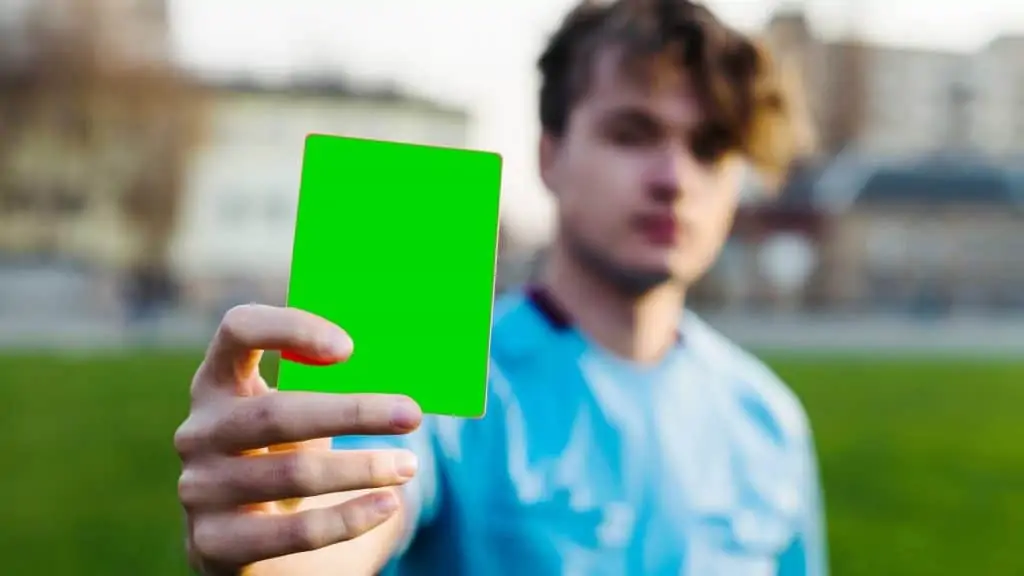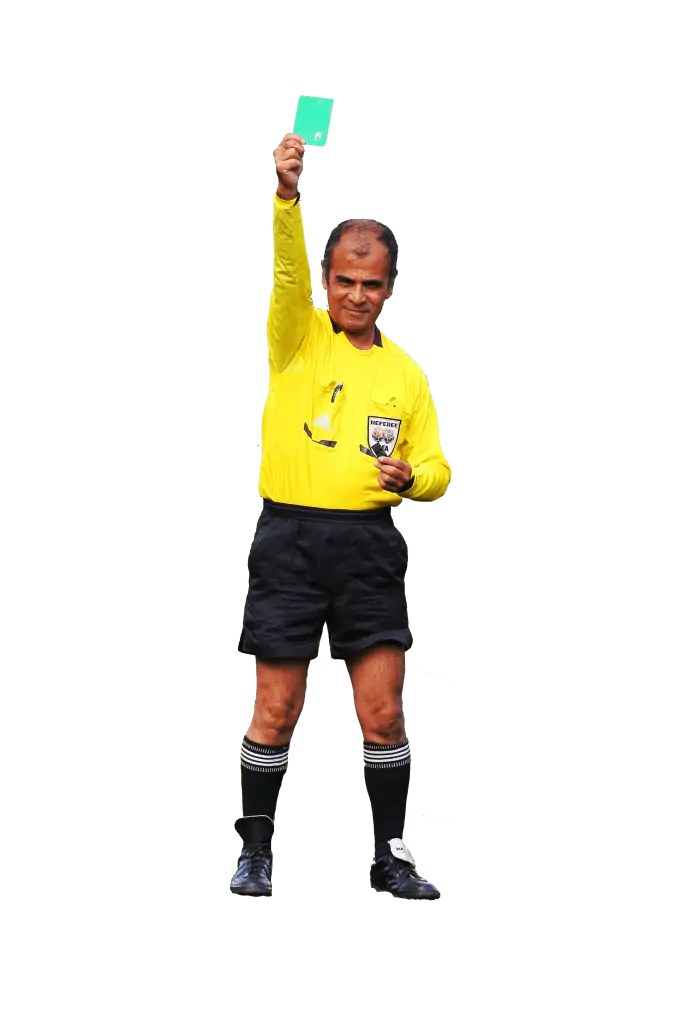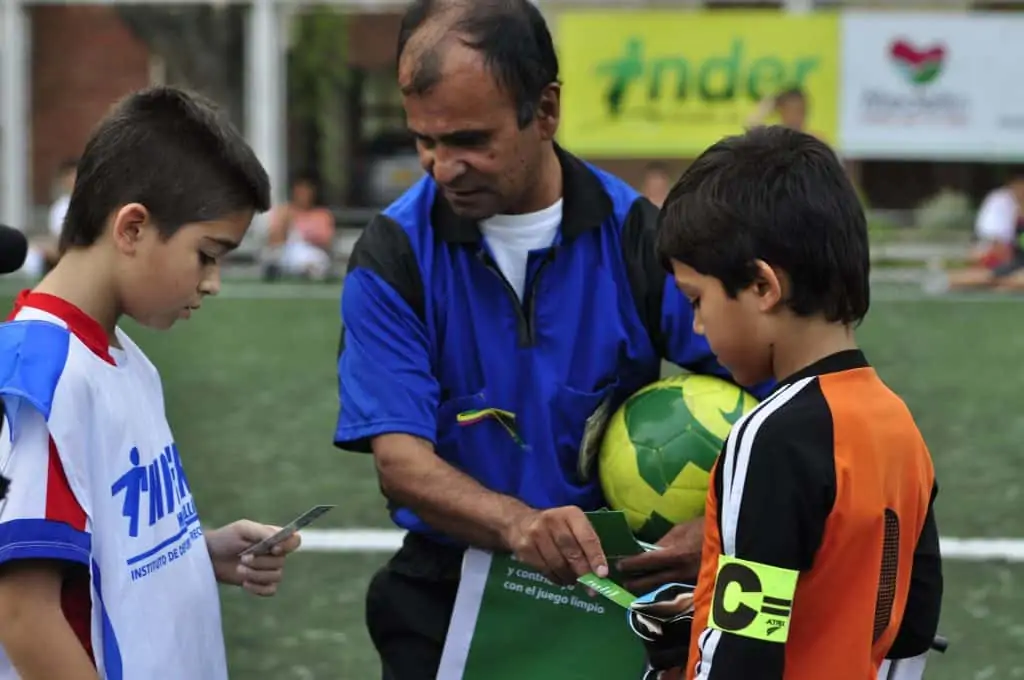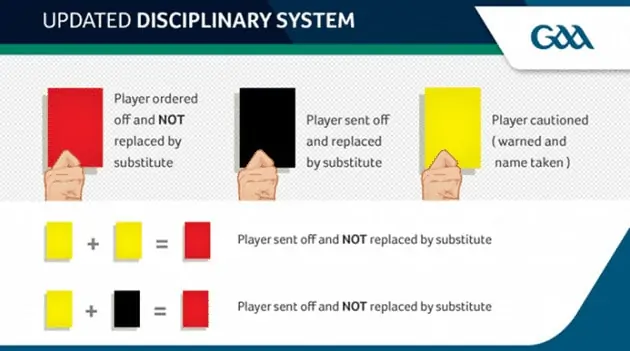Soccer has recently seen many changes to the rules, from one season to the next. Now there are ideas of implementing a new card to the game – a green card.
While the rules are evolving to improve the game, we take a look at soccer around the world and what the green card is used for, and how it could benefit the players and the fans.

What is green card in soccer?
Green cards are used in the CONIFA world cup for dissent and the player must leave the field for a period of time – like a sin-bin.
Green cards are given as a reward in Italy’s Seria B for good sportsmanship.
Sin Bins
New rules for the youths and the local leagues in England are introducing, sin-bins, which could be associated with an orange card.
For that system, they won’t have any new cards but instead, use the yellow and signal.
Are the green cards connected with the proposals for a sin-bin system to give the referee more control and keep uphold respect? Let take a look at where they’re used and what for.
CONIFA World Football – Green Cards
- Leave the field
- Can be substituted
- Only substituted if the team has not used all
- Can take part in next game
The Confederation of Independent Football Associations is a body that’s outside of FIFA.
It was established to unite smaller nations and states. A world cup for these nations is held every two years.
The CONIFA’s Asian president told Sky Sports;
“We have had some minor problems in the past, with some red cards at the end of a game – mostly when teams realized they can’t keep up and find themselves losing heavily with 10 minutes left,” he explained.
Jens Jockel
In 2018 the world cup was held in London and there was shown the first green card in a professional game of soccer.
The card was introduced to cut down on dissent and diving. When a player is shown a green card they must
“It’s a really good idea of how to sanction things that might not be worthy of a red card. More like personal mistakes – using swear words, disrespecting spectators and coaches, and so on. It’s a perfect way to find something in between.”
Jens Jockel
It sounds like a good idea. The referee has more control over the players and the player will be better behaved. It could be a good idea for the whole game.
It’s generally not good for spectators watching a competitive game only for a player to get sent off. It generally ends up one-sided.
So the idea that a player is sent off but the team can bring on another player, seem like a good alternative.
Respect is something that needs to be dealt with in form of life.
With so many people watching soccer, we need to have good role models for the youth to look up to.
Italian Soccer – Green Cards
A green card will be given to players for acting in favor of fair play. If they perform an exemplary act. This was introduced in Italian soccer’s Siria B – the second league in 2016.
The players would not be shown the card during the game, the green card is more symbolic of the act. It’ll be noted in the referee’s notes.
The first green card in Italian soccer was given to a player who told the referee that the ball had not touched him. Which lost him a corner kick, but gained him a green card.
Here is what the president of Seria B said to the Sun newspaper.
“It’s a symbolic award,” said Abodi. “It could be something very simple. The important thing is to recognise it when a professional does something exemplary.”
Andrea Abodi
So unlike yellow and red cards, a green card is given to reward a player. A positive approach.
The cards will be announced at the end of each month, but there is no report if there is any reward for one.
History of the Red, Yellow, and Green Cards in Soccer
Players have been cautioned for serious breaches of the law in soccer, ever since 1881 and two years earlier in 1878 a referee used a whistle for the first time.
The game of soccer started out like a gentleman’s game and it was expected that the players would adhere to the rules of the game.
Even though in the early years of the game, soccer and rugby were a combined sport and normal tackles made then would result in a sending off today. Read my article on the origins of soccer here.
While in the early days of the game, soccer was played locally and there was no communication barrier. The first World Cup was in 1930, held in Uruguay.
The referees would use hand signals to control the game and it was only realized in 1966 that there was confusion with the system.
Red and Yellow Cards History
During the 1966 World Cup, Jack Charlton was cautioned but was not aware of the fact until after the game when the England coach contacted FIFA for clarification.
It was then that Ken Ashton, a former referee acting as a referee committee member for FIFA, realized the confusion.
On the way home from a soccer game, Ken Ashton saw traffic lights and thought ‘Yellow, take it easy; red, stop, you’re off’.
This would take away any confusion for the players and the spectators and the first cards were introduced at the World Cup in Mexico in 1970.
Green Cards History
While red and yellow cards dealt with the problems of players breaking the laws of the game, players were not rewarded for good behavior until a number of years later.
It was another 16 years later in 1986 that the idea of green cards in soccer was thought of by Roosevelt Castro Bohorquez.
The idea came about when Roosevelt, a soccer referee from Columbia, had the idea to strengthen values in the game by completing the traffic light system with red, yellow and green.
It was in 1996 when Roosevelt created a manual for mutual respect in the game, which resulted in the incarnation of the green card.
In an interview with Soccer Blade, Roosevelt Castro gave us an insight on green cards;

When did you start showing green cards in your games?
“With the Laminita del Divino Niño Jesús I started in 1996, but, and as explained, I implemented them in the year of 2004 in several children’s soccer games.”
Roosevet Castro Bohorquez
How was the reaction when you first showed a green card to a player?
“He was very curious and scared, but I explained the methodology that consisted of not punishing him but acknowledging his respectful behavior and fair play that he had on the field.”
Roosevet Castro Bohorquez
Are the player’s fans of the green card where they’re implemented in Colombia?
“There are many players and technicians who see it with good eyes, for the contribution to peace and coexistence in football.
I have done some opinion tests that are on my YouTube Channel and many have liked this proposal that rewards fair play.”
Roosevet Castro Bohorquez
What is your hope for the use of green cards worldwide?
“My desire is that it be incorporated into the regulation of football and so that everyone who plays this sport on our planet can have it.”
Roosevet Castro Bohorquez
What other positive measures could be implemented in the game?
I believe that the scope of the green card is very wide and that it can be used to generate spaces for peace and coexistence, in the context of football.
For example: that for each action of fair play and/or respectful behavior of the players, technical or administrative bodies awarded with the green card a point is given and five annual one yellow, ten annul a non-violent red and 20 an expulsion of bodies technicians Likewise, let it be the first tiebreaker item.In the same way, if they charge for a yellow and a red one, that the green one also has an economic recognition to the players or uniforms or sports implementation for the amateur soccer players and that at the end of the sports season the individual and collective cards are added and the Fair Play players and teams are rewarded, as they do with the less defeated scorers or archers.
Roosevet Castro Bohorquez
The future of soccer looks bright with the addition of the green card. To see referee Castro in action, take a look at his Youtube channel.

Irish Soccer (FAI) Green Cards
- Line-up & shake hands before each game with the opposing team & game officials.
- No foul or abusive language used during the game, by either players or coaches.
- No over-aggressive play during the game.
- No fighting – either with teammates, or opposing players.
- If a foul is committed, both players involved must shake hands before play restarts.
- Respect is shown to game officials, other players & coaches at all times.
- Line-up & shake hands after each game with the opposing team & game officials.
The Irish football association FAI has introduced its own green card system for youth competitions. A team will be given a green card if they carry out all of the points below.
This will enable them to go on to compete in bigger competitions across the country.
Black Cards – Gaelic Football
- Deliberately bringing down an opponent
- Off-the-ball contact
- Aggressively remonstrating with officials
- Abusive language
A different game to soccer, but one sport can learn from another. The first black card was shown in Gaelic football in 2013. The black cards are given out for 5 offenses;

This system is similar to the green card that was used at the CONIFA world cup. In this system, if the player is first shown a black card, the player will be sent off and they can be substituted.
If the player has already been shown a yellow card, the player will be sent off and they cannot be replaced.
The Future of Green Cards
The green cards that have been introduced are a positive progression for soccer. Any improvements that can be made to improve respect for all are good ones.
In the future, there could be an introduction by FIFA to implement a green card or orange card (although they’re difficult to see from afar).
Gaelic football may have found the best possible solution although there all call for the time allotted sin bin, to keep the players on the field.
Related Questions
What is a blue card in soccer?
A blue card is used for indoor soccer in the United States. The offending player will sit in the box for 2 to 5 minutes until the time is up or the opponents have scored.
What are the cards in soccer?
A yellow card is given as a caution to a player and a red card is given to send off a player. Two yellow cards result in a red card.
Joel is a seasoned soccer journalist and analyst with many years of experience in the field. Joel specializes in game analysis, player profiles, transfer news, and has a keen eye for the tactical nuances of the game. He played at various levels in the game and coached teams - he is happy to share his insight with you.



